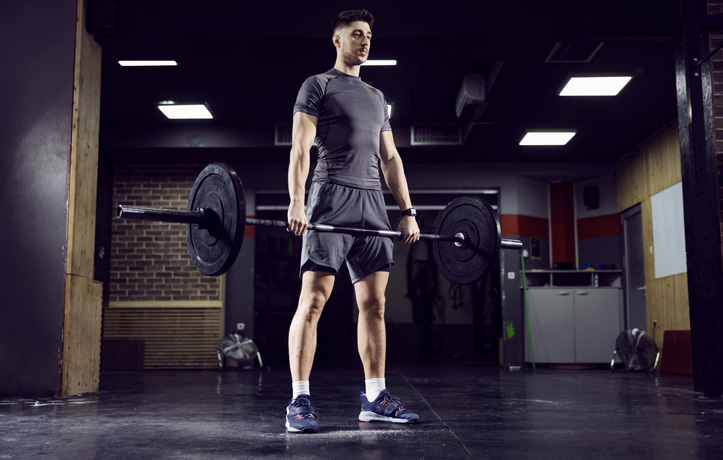Check out our free course on foam rolling for some of the latest, greatest information on myofascial rolling.
Foam rolling is a popular activity for relieving muscle pain and tension, but what about using a foam roller on the low back area? We’ll explore some of the reasons why foam rolling may not be the best approach for the low back and alternative ideas for addressing low back pain.
The popularity of foam rolling
The popularity of foam rolling has been quickly moving across the fitness industry. Foam rolling’s been acclaimed for helping to reduce the chance of injury by increasing range of motion, as well as increasing performance. Perhaps the most popular reason to foam roll is to reduce tension and pain.
While there are several studies that support all these claims to some extent (MacDonald, Penney, Mullaley et al. 2011; Healey, Hatfield, Blanpied et al. 2013), unfortunately this information has been translated by many consumers thinking that there is no danger to foam rolling and that an individual should just stick a foam roller anywhere it hurts and roll around for a few seconds. One of the areas where this is the most misunderstand is using the foam roller on the low back for low back pain.
What is low back pain?
Low back pain is not a specific disease; rather it is a complaint that may be caused by a large number of underlying problems of varying levels of seriousness (Borczuk, 2013). The majority of low back pain does not have a cause but is believed to be the result of non-serious muscle or skeletal issues.
Low back pain is generally classified into three types: mechanical, non-mechanical, and referred pain from organs (Manusov, 2012). Cohen, Argoff, and Carragee (2008) suggest that mechanical low back pain makes up 90% or more of the cases.
According to Dr. Everett Hills, most patients that experience mechanical low back pain report a history of different events leading up to the pain. These include lifting heavy objects, prolonged sitting, or maybe motor vehicle accidents and falls. To test for back pain, Hills suggests beginning with an assessment looking for asymmetries in hip musculature and testing range of motion throughout the spine. In the majority of cases, low back pain can be associated with musculature asymmetries and range of motion deficits.
Muscle imbalance likely causing low back pain
These are indicative of muscle imbalances, likely causing the muscles of the low back to become compensatory and overworking the supportive structures (i.e., ligaments and tendons). Thus, the most likely cause of pain is sprain or strain to the soft tissue structures that support the lumbar spine.
Based on the given information for mechanical low back pain, the low back is not the cause but the recipient of pain. Specifically targeting the low back with any sort of massage or relaxation technique may work to momentarily relieve some of the pain, but it does not get to the root of what is causing the low back to become overworked.
Overhead squat assessment for correcting lower back pain
For the fitness professional it is essential to perform some sort of a movement assessment that addresses total body strength and range of motion. For example, using the overhead squat assessment and watching for the client to maintain a neutral spine throughout the squat.
This assessment is an easy to use tool that can indicate whether or not there is a mechanical relationship to the client’s low back pain. The most common movement compensation seen with low back pain is an extension of the lumbar spine during the squat, also known as an anterior pelvic tilt.
An anterior pelvic tilt indicates a muscle imbalance with overactive low back and hip flexor muscles and underactive core and hip muscles, as well as a possible range of motion deficit in hip extension. In this scenario, if a client is experiencing low back pain, it is generally not the low back that is causing the problem; it is the movement imbalance around the hips. Therefore, there are several areas which should be foam rolled.
What is foam rolling?
Foam rolling is a form of self-myofascial release (SMR) that is quickly becoming a popular method to use in situations with acute pain or injuries. It is often said that by using a foam roller, one can reduce the tension and pain in several areas of the body. While this may be beneficial, there are several mechanisms that may relate to a change in the sensation of pain.
For example, simply rubbing the skin over an injury can change the amount of pain one feels at that moment, but it has no influence or benefit on the tissue beneath the skin. In order to achieve myofascial release there must be a low load dragging force across the tissues and this must be sustained for a period of time (Remvig, Ellis, & Patijn, 2008).
Unfortunately, most people using a foam roller roll too quickly over the skin and may be changing only the sensation of pain but not inducing myofascial release.
How am I supposed to foam roll?
According to Clark and Lucett (2011), foam rolling should be used for two specific reasons:
- To alleviate the side effects of active or latent trigger points.
- To influence the autonomic nervous system.
Alleviating trigger points with a foam roller requires an individual to slowly roll (about an inch per second) until they find a tender spot. When they find a spot, they then hold pressure directly on it. Holding pressure on the tender spot for a minimum of 20 seconds but up to 90 seconds will diminish trigger point activity by stimulating certain sensory receptors.
Influencing the autonomic nervous system, again by sustaining slow and controlled pressure, works through a reflexive mechanism via the hypothalamus. This can decrease heart rate, blood pressure, and reduce overall muscle tension while increasing blood flow and the ability of the tissues to move (Clark & Lucett, 2011).
Both mechanisms of using the foam roller correctly involve slow rolling, identifying a tender spot within the muscle, and holding sustained pressure on that spot until it “releases.” In order for this to be effective, an individual must be able to relax and breathe while the roller is on a tender spot.
For more information on the steps to foam rolling, follow the link.
Why foam rolling the low back is not advised?
Based on the previous information, foam rolling the low back is not advised for a variety of reasons. First, most low back pain is caused by a mechanical deformation, such as an arch in the low back.
The diameter of the average foam roller is about 5” and most individuals cannot control the position of their low back while on this roller. In order to induce a muscle “release” the individual must identify a tender spot and then stop and hold pressure on this point. If one is tensing all of their trunk muscles and rolling quickly (as most people do) then a release cannot occur.
If an individual does as is taught and does try to relax then they essentially just lay across the roll and force even more of an arch in their low back along with applying excessive pressure on the lumbar spine and the discs that separate them. Therefore, this ultimately aggravates the mechanical position that caused the low back pain in the first place.
Second, if the low back pain is caused by non-mechanical factors (such as spondyloarthritis) then having the pressure of the foam roller directly on the spine could exacerbate the condition.
Third, areas the foam roll is used should have bony protection for organs. For example, when rolling the chest, there is no danger to the heart because the rib cage provides adequate protection. In the low back, there are the kidneys and the liver, which have little to no bony protection (Newton, 1998). While they may be protected by large muscles, it is still considered an endangerment site, especially when using body weight compression across such a large object.
What can I do for my low back?
First, it is important to address the areas causing the movement compensation. As was mentioned previously, the low back muscles are rarely the cause of the problem. Therefore, rolling the muscles that make up the hip flexors, the glutes, and the calves can reduce the amount of tension in the low back.
Next, the low back can benefit from some much less dangerous types of therapy. Always consider working with a licensed therapist, no tool can target a muscle like a pair of experienced hands, especially in the low back.
Also, consider a smaller tool than a foam roller. Several companies develop tools for self-myofascial release for specific areas such as the low back. A smaller tool, where an individual can identify a spot and relax, will be much more effective and safe.
helpful resources to check out on foam rolling
References
Borczuk, P. (2013). An evidence-based approach to the evaluation and treatment of low back pain in the emergency department. Emergency Medicine Practice. 15(7):1-23.
Clark, M. & Lucett, S. (2011). NASM Essentials of Corrective Exercise Training. Baltimore, Maryland. Lippincott Williams & Wilkins Publishing.
Cohen, S., Argoff, C. & Carragee, E. (2008). Critical Review: Management of low back pain. BMJ 337(a2718).
Healey, K., Hatfield, D., Blanpied, P., Dorfman, L. & Riebe, D. (2013). The effects of myofascial release with foam rolling on performance. Journal of Strength and Conditioning Research. 28(1):61-68.
Hills, E. (2014, April 9). Mechanical low back pain. Mechanical Low Back Pain. Retrieved May 8, 2014, from http://emedicine.medscape.com/article/310353-overview.
MacDonald, G., Penney, M., Mullaley, M., Cucuonato, A., Drake, C., Behm, D. & Button, D. (2013). An acute bout of self-myofascial release increases range of motion without a subsequent decrease in muscle activation or force. Journal of Strength and Conditioning Research. 27(3):812-821.
















